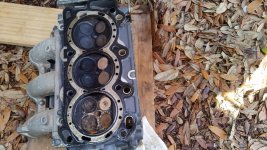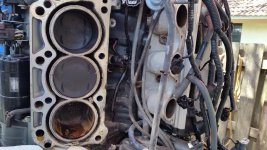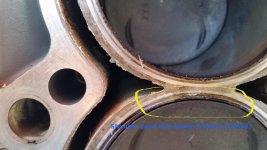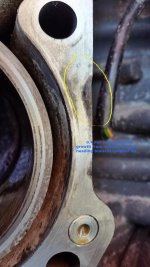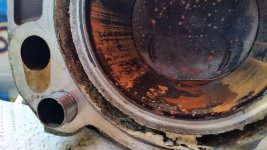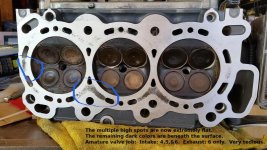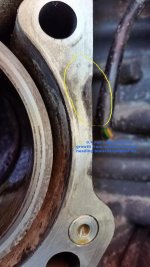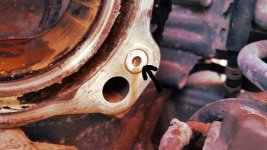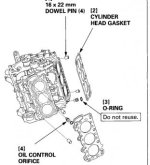Three_plus_One
Member
Now I see the disconnect. The phrase "Water shooting out under the cowling all over the place." was from the originator of thread back in 2017. Being new to forum, I thought it appropriate to continue adding this thread since I thought I had a corrosion issue as well. I think you may have misinterpreted Tom L's symptoms as mine.
In any event, my original symptoms are as follows from my 3/19/19 post: "The engine oil is a murky beige. Cylinder #6 failed a leak down test and after an endoscope inspection of the cylinder, I can see drops of the nasty water/oil sludge on the piston. Is it just the block that is likely leaking [into the oil] or is it the head [corroded] as well?"
Given the 'watery mix' found at the bottom of the intake manifold was a mix of saltwater and motor oil, I'm going on the assumption that it originated from the head/cylinder/headgasket area. I can't fathom how else the motor oil/water mixture found its way into the intake manifold. You can see evidence of the oil in my 5:36 pm post. Your thoughts?
In any event, my original symptoms are as follows from my 3/19/19 post: "The engine oil is a murky beige. Cylinder #6 failed a leak down test and after an endoscope inspection of the cylinder, I can see drops of the nasty water/oil sludge on the piston. Is it just the block that is likely leaking [into the oil] or is it the head [corroded] as well?"
Given the 'watery mix' found at the bottom of the intake manifold was a mix of saltwater and motor oil, I'm going on the assumption that it originated from the head/cylinder/headgasket area. I can't fathom how else the motor oil/water mixture found its way into the intake manifold. You can see evidence of the oil in my 5:36 pm post. Your thoughts?


